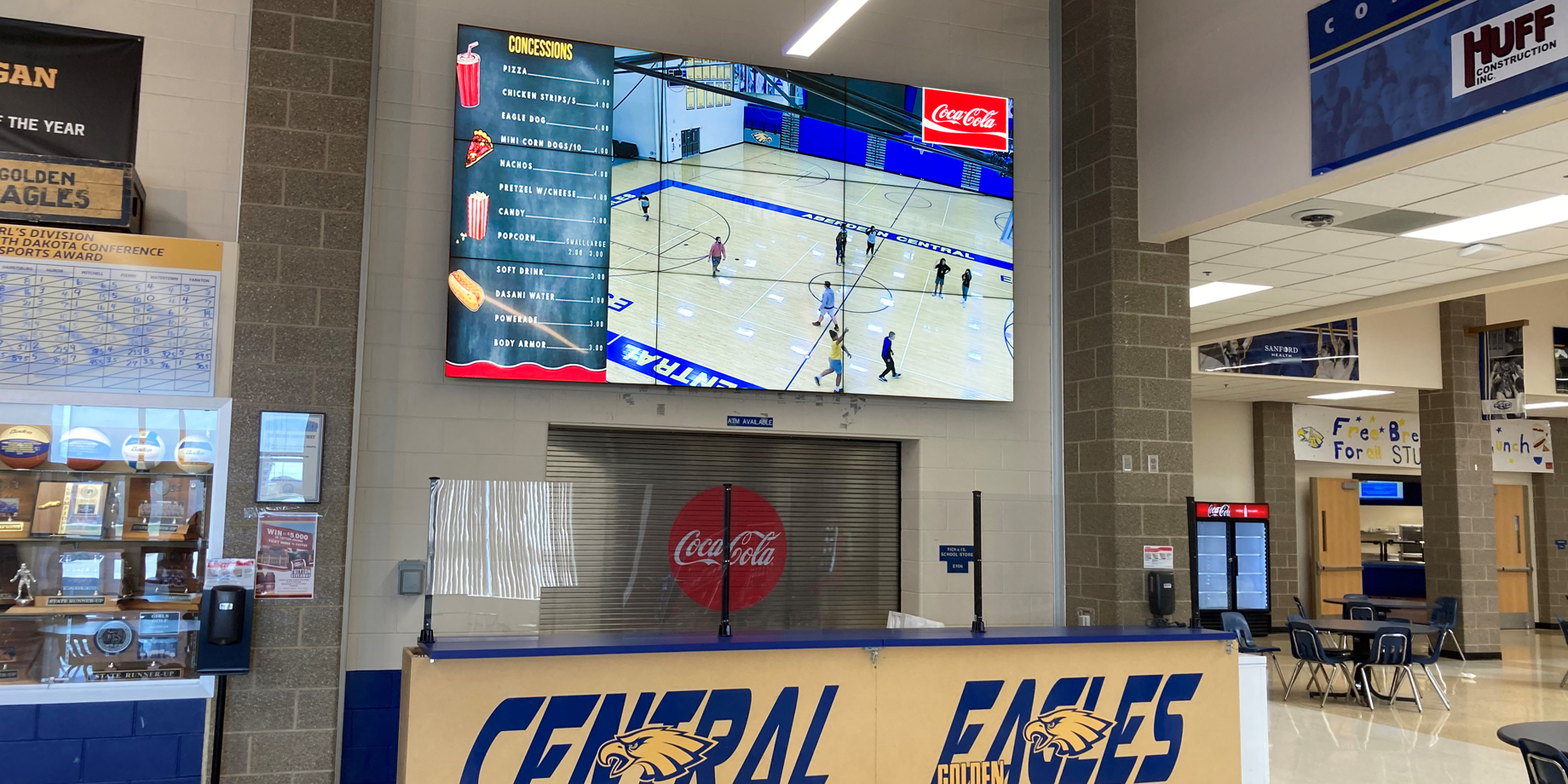Daktronics Quad Player Supporting Multiple Digital Signage Applications
As digital signage applications expand, the technology that supports them is advancing as well, including Daktronics Quad Player and the flexibility it provides for end users and their communication strategies.
Justin Ochsner on 6/3/2024
Categories: Business & Community, Sign Company News

Digital signage is everywhere we look. From schools to businesses to sporting events to billboards, digital messaging has never been more prevalent than it is today. But these displays are more complicated than simply seeing the messages they share. They are more than a TV to be turned on and change channels.
To hear about the complexities of LED and LCD signage, including what it takes to control them and prepare them to share the desired messaging, we called on our resident experts – Bill Hadsell and Lisa Silveira. Bill is our control system product manager and Lisa is our digital signage business manager. They joined us on the Daktronics Experience Podcast to talk about our Quad Player and how it supports this marketplace.
Here’s an excerpt from the episode:
Justin Ochsner
Can we start with a quick explanation of what the Quad Player is?
Bill Hadsell
The Quad Player is our most robust digital media player. It’s a hardware device that is referred to as Quad because it has four independent HDMI outputs that can operate independent screens or, in more advanced cases, allow for the spanning of a single piece of content across four LCD screens, or even more screens depending on the system design.
Think of an array of LCD screens hanging on the wall, all stacked together to form one large canvas – that’s an LCD video wall. The Quad Player can drive up to 16 LCDs in different configurations and has the processing power and number of outputs to support the different resolutions required by the overall ecosystem with the widest range of high-end digital signage and video wall applications.
Matt Anderson
So Lisa, how has this been working across a number of different applications from the live events space to the business and community side?
Lisa Silveira
Yes, the Quad Player allows us to have a whole bunch of solutions to offer to the market that we focus in. Without it, we could really only focus on single displays or two displays put together. Now, we’re able to fit the needs of the market by doing video while also doing menu boards in convenience stores and grocery stores as well as doing large retail spaces and lobbies for things that are a little bit outside the norm.
This player allows us to do a little bit more. It has eight full HD and Ultra-High Definition configuration quality, so that’s great for our customers that are a little higher end. And now we have some options, because of the size of the player, to be able to put it behind the displays. For a customer, it can power multiple different displays in different locations.
Justin Ochsner
It sounds like a customer who might have had 1 or 2 displays can now use this player to add more screens, is that correct?
Lisa Silveira
Absolutely. It also gives us the ability to span content across all the displays. If someone had two displays and wanted to upgrade to four displays, they can add those displays and span one piece of content across all four to make a big impact. We see this with special announcements or there’s something going on at the event that having content span across all those displays makes it pretty exciting. And with the ability of the Quad Player, we can do that!

Matt Anderson
Is that something you’re seeing happen more often – the LED or LCD wall across markets?
Lisa Silveira
Yeah, we’re seeing a little bit of both. Obviously, we have the LED offering, and we also have the LCD offering for video walls. We’re seeing LCDs being a great fit for a certain customer based on their budget, location and a few other factors. But we’re seeing these video walls used to bring customers inside a store or to do something different in a mall area to attract customers inside or event to promote products and services in those areas.
Even if you’re a quick-serve restaurant and you have menu boards, you might also have a video wall that plays content about a product or a specific featured item. It’s kind of like a silent salesman. So, they’re putting these products on the displays to catch the attention of the customers while they’re in the location to kind of get that upsell. And having the video walls gives them the kind of bigger wall space and bigger stand to be able to play that content to capture their attention.
To hear more of this conversation, click here for the full podcast episode.
